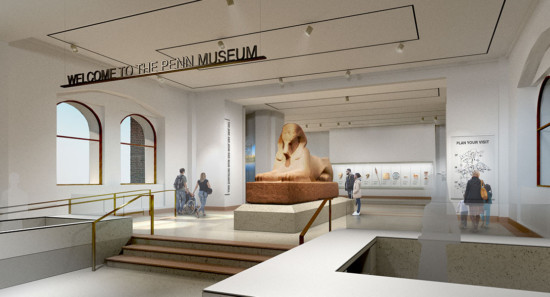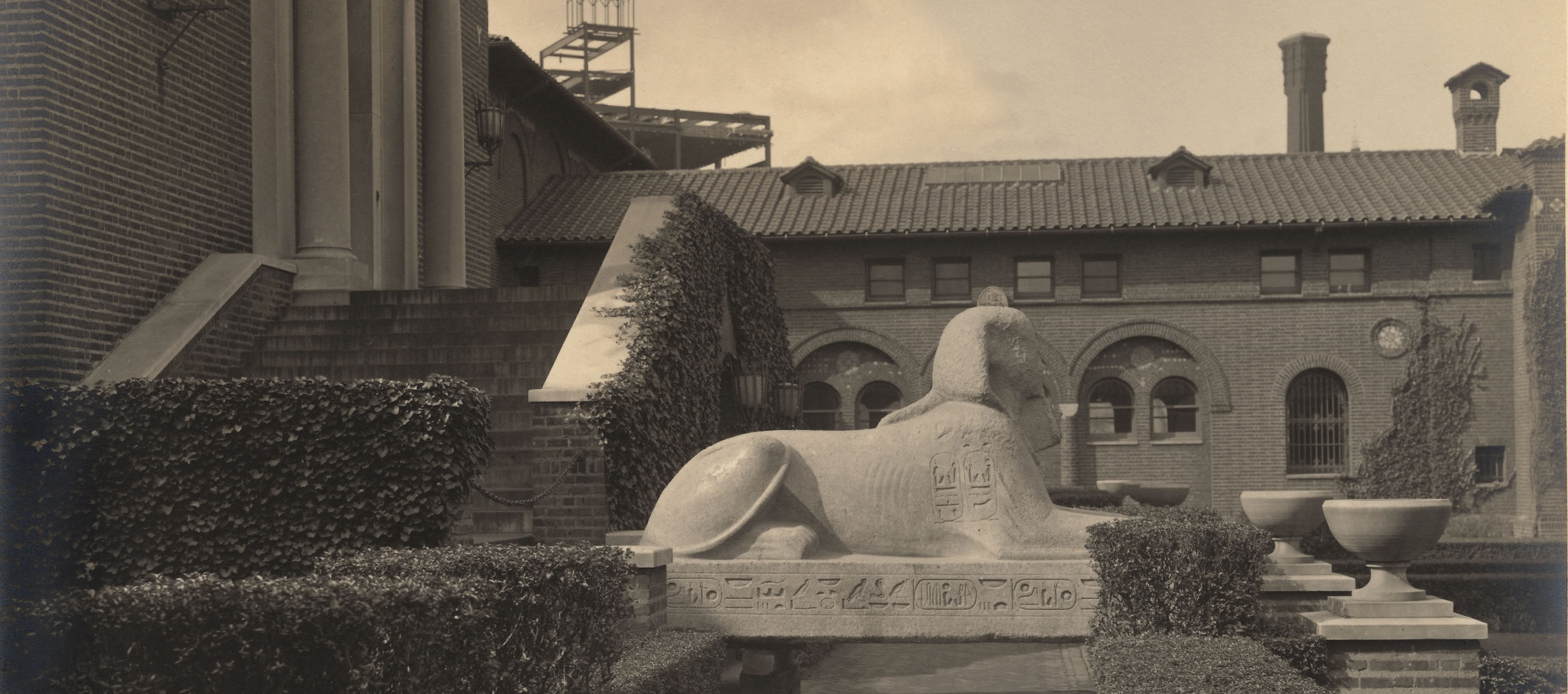
A computer rendering of the redesigned main entrance hall at the Penn Museum, where the famous 3,000 year-old Sphinx will rest (from the Penn Museum website).
How does one move a 25,000-pound Sphinx up a couple flights of stairs? Very carefully, we presume. That’s what folks at the Penn Museum are mulling over right now as they plan to move the Museum’s best-known artifact, a 3,000-year-old, red granite Sphinx, into its redesigned main entrance hall.
“The Sphinx has long been our mascot and this puts it front and center, as the anchor of our new visitor experience,” said Julian Siggers, the Museum’s Williams Director.
Moving day is scheduled for June 13th and the new location will be unveiled in the fall.
Preparations for the move have included a 3-D scan to determine the Sphinx’s density and weight and to find the right equipment to move it. Doors and windows have been removed to create a big enough path.
The Sphinx will be loaded onto “air dollies,” essentially giant air-compressor-powered hoverboards. Museum officials are planning for a four-hour move on the morning of June 13th, according to Museum officials.
The 12.5-ton Sphinx arrived at the Museum on October 19, 1913 after being transported by horse-drawn carriage through the city from Port Richmond, where a German freighter dropped it off. During its first three years at the Museum, the Sphinx was on display in the courtyard. That’s the last time it was outside. In 1926, it moved into the Egypt (Sphinx) Gallery.
The Sphinx dates to the reign of Ramses II and the ancient capital of Egypt, Memphis. It was part of a collection divided between the Egyptian Antiquities Services, the Egypt Exploration Fund and the British School of Archaeology, which the Museum supported.

The Sphinx’s original resting spot in the Penn Museum courtyard (photo from Penn Museum website).








Recent Comments